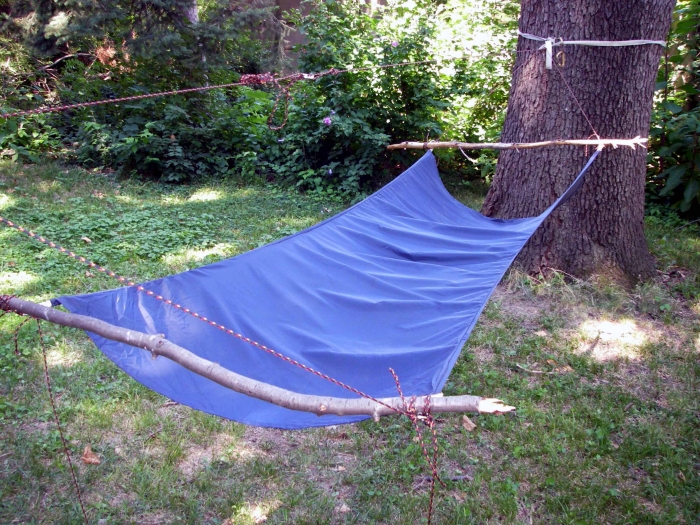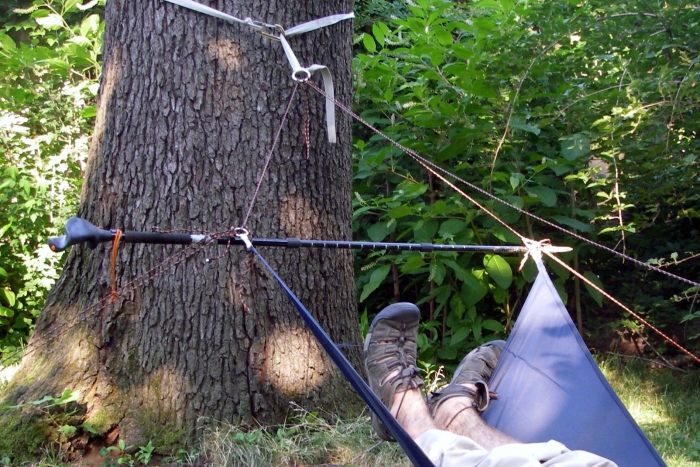Well I just tried something a little different.
Another conversion if you will.
I was looking at my claytor expedition hammock and how the webbing/rope can feed through the ends. I decided to try it on the Bridge.
The outer two lines are the original suspension, the inner two are the newly added through a quickly sewn loop.
What I am trying to accomplish is getting the benefit of a regular hammock for just relaxing. I like having my upper torso curved upward like that to just relax. So this is a wide view of how this might work.
So here I am in it with it in this 'mode'
All I did was have some cord go through the loop like the mosquito hammock
That line just goes to the ring/buckle as well. To 'revert' back to the Bridge just unclip/untie from the buckle and put the spreader bar back in.
I tried a few different configurations before having to come in (and hearing my temporary stitching start to come out!) and I think there is potential here, but there is noticeable shoulder squeeze. I might be able to loosen those edges by just making the loop in the middle and not all the way to the ends, but it would have to be STRONG.





 Reply With Quote
Reply With Quote












 The problem now is that there are two degrees of freedom in setting the ridgeline and coordinating those...well, let's just say that I had a driver's licenses for quite a few years before I could parallel park with any confidence.
The problem now is that there are two degrees of freedom in setting the ridgeline and coordinating those...well, let's just say that I had a driver's licenses for quite a few years before I could parallel park with any confidence.






Bookmarks